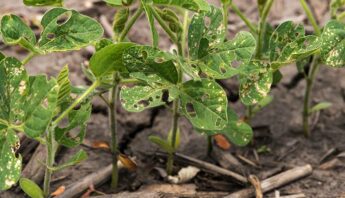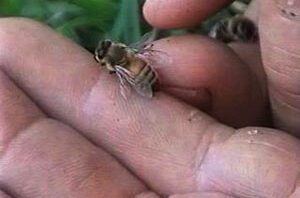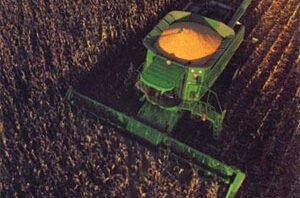The ecological, economic and agronomic disaster accompanying herbicide-tolerant transgenic crops is by now well known: over 10 million acres of superweeds resistant to Monsanto’s weedkiller, RoundUp; farm machinery breaking on RoundUp-resistant pigweed thick as a baseball bat; Monsanto paying farmers to spray their fields with competitors’ herbicides; a new generation of transgenic crops in the pipeline engineered to withstand older even more dangerous chemicals like 2,4-D.
Last week brought more bad news for Monsanto: the same phenomenon is also occurring in insect pest populations that are developing resistance to transgenic “Bt corn” in the Midwest.The Wall Street Journal recently reported Iowa State University’s findings that the corn rootworm is for the first time proving resistant to the insecticidal toxin, Bt, in transgenic corn in Iowa. Four days later, Business Week reported Bt corn plants in northwestern Illinois toppling over after root damage caused by the same insect, apparently as impervious as its Iowa cousins to the engineered Bt toxin. Likewise, insect resistance to transgenic Bt crops in India (where dramatic crop failures resulted) and South Africa has been reported.
This is a classic case of the pesticide treadmill. A pesticide application (whether sprayed the old-fashioned way or applied through a crop plant engineered to contain that toxin in its cells) typically kills many – but not all – of the targeted pests. Of those that survive, some will pass on their genetic traits of pesticide resistance to their offspring, gradually leading to a more and more resistant population. Farmers get trapped on this treadmill as they are forced to use more — and increasingly toxic — chemicals to control pest populations that continue to develop resistance to each new type or class of pesticides.
Ecological unravelling
The fundamental unsustainability of chemically-depedendent ag doesn’t end with the emergence of superbugs. By eliminating one pest (even if only temporarily), Bt crops increase their vulnerability to other “secondary” pests that can quickly fill the ecological niche and become serious pests in their own right. In the Makathini Flats of South Africa, farmers have resorted to using large amounts of acutely toxic organophosphates to control secondary pests that have emerged (aphids, jassids, thrips and true bugs). In China, Bt cotton has not only provided a safe haven but also become a source of mirid bugs that then infest other crops such as grapes, peaches, pears and apples.
The impending loss of Bt as an effective tool of the organic farmer adds insult to an already injurious system.
Organic farmers have used the naturally occurring form of Bt (a soil bacterium) successfully for over 40 years as part of organic pest management. Because it breaks down in sunlight, selection pressure is low and insects have been slow to evolve resistance to it. Until now. The impending loss of Bt as an effective tool of the organic farmer adds insult to an already injurious system.
It's called 'planned obsolescence'
The worst part about the latest GE fiasco is that it all could have been prevented. As early as 1993, scientists were warning about the inevitable rise of superweeds and superbugs. Ten years later, EPA sought scientific advice on how to manage the likely emergence of insect resistance to Bt crops. The Center for Food Safety’s Bill Freese describes how a majority of the scientists consulted by EPA at the time urged the EPA to require farmers to set aside a refuge of non-GE corn, comprising 50% of the total crop acreage, in order to slow the development of Bt resistance.
But that would have halved Monsanto’s seed sales! So EPA quietly sided instead with the only three dissenting voices in the group, going along with Monsanto’s recommendation for a much smaller 20% refuge.
From industry's perspective, the emergence of pesticide resistance, secondary pests and failure of first generation GE crops is actually good business; farmers will have to keep coming back for stronger poisons and more expensive products. There's an industry term for this: planned obsolescence.
Fortunately, as Doug Gurian-Sherman of the Union of Concerned Scientists reminds us, plenty of non-GE solutions to corn rootworm exist. These solutions lie in agroecological practices such as long crop rotations, biological control and good soil management.
It’s not too late for us to get off the pesticide/GE treadmill; but we will have to give our public agencies a big shove to get them moving in the right direction.








